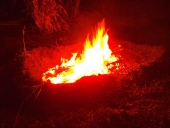




Freakin' hippies and Squares, since 1986





I've never added sand to soil, and probably never will.Landon Sunrich wrote:Sand
I love clay! Drying and powdering it sounds fiddly though; would it work to make it into a slurry and mix it through the other stuff?Landon Sunrich wrote:Clay
Is your soil on the acid side? My soil's ph is around 6.9, which is fine, but I wouldn't be adding anything alkaline like wood ash.Landon Sunrich wrote: Ash




Freakin' hippies and Squares, since 1986








Freakin' hippies and Squares, since 1986




Freakin' hippies and Squares, since 1986








Freakin' hippies and Squares, since 1986








Freakin' hippies and Squares, since 1986




John Elliott wrote:The only thing I can think to add is to compost those old AA batteries that gave out on you. (For the minerals, of course.)
Moderator, Treatment Free Beekeepers group on Facebook.
https://www.facebook.com/groups/treatmentfreebeekeepers/









Freakin' hippies and Squares, since 1986














Freakin' hippies and Squares, since 1986




Freakin' hippies and Squares, since 1986




Yes, I'm that David The Good. My books are here: http://amzn.to/2kYcCKp. My daily site is here http://www.thesurvivalgardener.com and my awesome videos are here https://www.youtube.com/subscription_center?add_user=davidthegood
 1
1




Freakin' hippies and Squares, since 1986




Freakin' hippies and Squares, since 1986

| I agree. Here's the link: http://stoves2.com |


